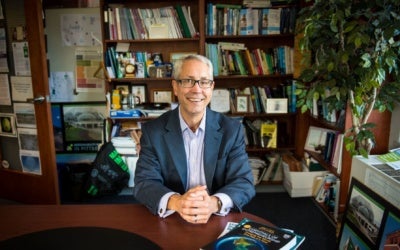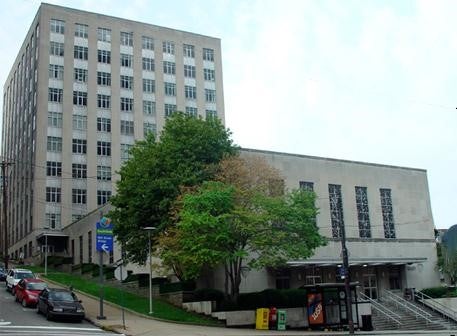For many, sustainability is top-of-mind since the UN IPCC report called for dramatic economic transformation within 12 years to adequately respond to climate change. The stark scope of the change needed is all the more reason to examine every measure to transform economic life. Duquesne Professor Robert Sroufe, a winner of the 2017 Ideas Worth Teaching Award, is an expert in putting tools for quantifying environmental impact in the hands of rising business leaders.
What contributions can people graduating from business school today can make in the face of that challenge outlined by the IPCC report?
The IPCC report and more recently the National Climate Assessment report are stark reminders of what inaction or business as usual will get us, i.e., rising temperatures, reduced biodiversity, and increasing costs from destructive natural events that exceed the investment in infrastructure and waste reduction that could have avoided these disasters. Given the staggering amount of waste we have in our energy, transportation, and food systems, opportunities abound for graduates to question the status quo.
Graduates should no longer accept wasting 66 percent of all energy produced in this country, or that 81 percent of every gallon of gas going into a combustion engine vehicle is lost as waste in the form of heat and friction. As business students spend the holiday breaks with friends and family for Thanksgiving, Christmas, spring break, or the summer, they can rethink food systems where food travels an average of 1,500 miles to get to our plates and we waste 40 percent of it. All of these examples of waste provide openings for business students to rethink systems and contribute to an innovative and integrated approach to including social, environmental, and governance (ESG) performance in capital expenditures.

Professor Robert Sroufe in his Duquesne University Office
In a business curriculum, students can start with using a Social Cost of Carbon-dioxide (SCC) in decision making and analytics. When doing so, they can look at a return on integration (ROInt), integrated rate of return (IntRR), and integrated future value IntFV as alternatives to traditional cost-centric and myopic approaches to ROI, IRR, and NPV.
Contributions from accounting and finance graduates will come from asking how more dynamic measures of performance can be included in sustainable accounting standards and integrated reporting of sustainability with financial performance.
All business graduates can start asking for better measurement and decision making that include ESG performance metrics along with long-term value creation as they have access to hundreds of ESG metrics per publicly traded firm from existing databases such as Bloomberg terminals or MSCI Global Socrates and Trucost.
The introduction to your syllabus notes a surge of interest in things like green buildings that is kindling demand for courses like this one. What societal factors do you think are driving this?
Drivers are the lower costs and business case for sustainability options to be part of business, infrastructure, and buildings. We can also see how business decision-making, along with products and services, all map into the United Nations Sustainable Development Goals (SDGs) as these goals have been drivers for change for a few years now.
Reporting on climate change in the form of GHG emissions is definitely of interest to students and enterprises as CO2 is really a measure of waste. The better the skills of business managers to measure and manage that waste, the more effective a business solution will be for creating value for the enterprise, the environment, social sustainability, and in providing information for governance and strategic decision making. We know that employees are the largest expense for an enterprise and that leading sustainability enterprises find value in reducing environmental impacts that contribute to outdoor and indoor air quality issues, improving social performance, human health and productivity, and an integrated approach to performance measurement.
Other drivers of this surge in interest includes the ability of MBA Sustainability rankings and the Aspen Ideas Worth Teaching award as validation of the needs for critical thinking involving global sustainability issues and these skills in business schools.
What strikes you about the reception of this course among students?
Students like the engagement, design competition and thinking differently about the places we work and live. We use our business school as a learning laboratory. Our own building represents over 5.6M buildings in the US so what students learn here can be applied anywhere. Experiential learning in the form of Energy Management Systems (EMS) design competitions provides a learning platform that promotes the engagement of students, faculty, alumni and trade professionals involved in green buildings. The challenge is for students to renovate a 165,000 sq ft building that is over 50 years old by developing three renovation investment options that include environmental and energy impact reductions, improvements in human health and productivity, along with putting a price on project-related carbon emissions.

Student proposals from the competition have become actual parts of the building as we are developing and updating a building dashboard showing CO2 levels, energy, Social Cost of Carbon, indoor air quality and utility consumption in real time as students walk into the building. The outcome of the competition for students is the ability to test their ideas while showing that for every dollar invested in the building, they can find environmental and social sustainability improvements as part of an Integrated Bottom Line (IBL) performance assessment.
Students like to dig deeper into the energy and LCA information. This aligns with trends from LEED, WELL building standards, and Living Buildings in recognizing the potential for existing and new buildings to be high performance buildings. I even see interest from graduate architecture students from area universities as they take my classes so that business performance and decision making enable their profession to design integrated solutions for building owners and occupants.
This course is structured around both the contributions of individual speakers as well as a software service (Sustainable Minds). What advice would you have for academics who might consider teaching a course like this, but are unsure of whether they have resources to make it work?
I like the ability of speakers to provide external validity as to the importance of a sustainability topic, bring their experience into the classroom, and reinforce the need for software as a tools for decision analysis. Speakers also provide an opportunity for a live case study analysis and afterwards it’s easier to invite them to do a semester-long project in separate live consulting courses, or to include them in research projects. Speakers are indispensable as an external resource to enhance experiential learning.
The software is making it easier for everyone to take a deeper dive into LCA and the outputs of this assessment. We have used the GaBi student version in the past at no cost and transitioned to Sustainable Minds as the LCA software is getting easier to use.
Including LCA as a topic within a course does not have to include a full product assessment from cradle to grave. Instead, LCA can be included in a course to show how much process-level information is available for product design, manufacturing, transportation and a product’s end of life so that students can understand the full life-cycle impacts and GHG emissions associated with products. What they find regarding consumer electronics is that the biggest impacts are in the use phase and not extraction, manufacturing, or transportation. Emerging resources such as Sourcemap.com reveal global pictures of product supply chains and LCA information that provide data and insight outside of traditional textbooks.
If there was one principle or framework from your course that every business leader, both future and current, should understand, even if they are not going into sustainability roles, what would it be?
We are all in sustainability roles and do not need the word sustainability in our titles. In my classes, students do a functional integration assignment where their own research shows how sustainability is already part of all business disciplines including accounting, economics, finance, IS/IT, operations, marketing, public affairs, strategy, and supply chain management. They find drivers of sustainability, enablers, and existing performance metrics in use in multinational companies and professional associations.
Integrated Management is a key strategic platform for innovation within enterprises. The result is a vision of strategic sustainability and opportunities for management action as we include ESG information within integrated bottom line (IBL) performance measurement.
![]()
Interested in more innovative insights for business education? Browse our complete collection of interviews with outstanding educators, and subscribe to our weekly Ideas Worth Teaching digest!


